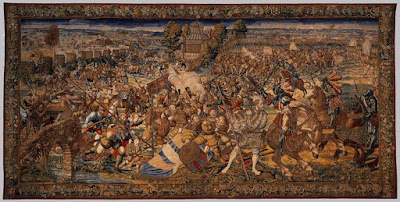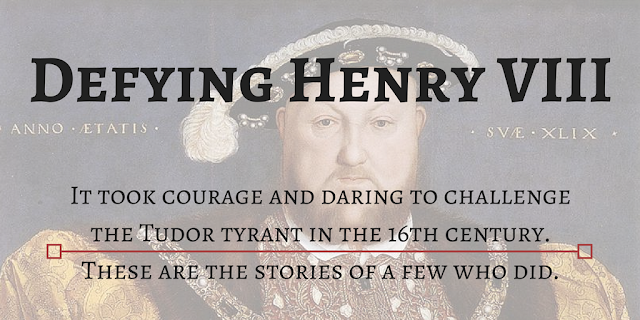The Tudor era was a difficult time to live. While we are attracted to stories of the glittering court and soap opera type drama, no one was immune to the shifts of power and turning of fortune’s wheel that could, and often did, bring one from the pinnacle of power to the depths of despair. Being born close to the throne was almost as much of a curse as it was a blessing.
Elizabeth of York was not born a Tudor but she became the mother of the new dynasty through a series of events that few could have foretold. Edward IV had come through the Wars of the Roses victorious, usurping the position of Henry VI to shift the Plantagenet crown to the York branch of the family. His eldest daughter, Elizabeth, may never thought to be England’s queen, but she was certain to be wed to one of the powerful leaders of Europe while her brother served as their father’s heir.
A giant of a man and an unmatched soldier, Edward IV gave few people reason to doubt the strength of his rule, especially once he rid himself of Henry VI and his son, leaving none but the most distant Lancastrian claimants. Then Edward died in 1483, leaving a twelve-year-old heir to a kingdom that had reason to dread the accession of a child king.
In a whirlwind of events, all of Edward IV’s children were declared bastards, and Richard III was proclaimed. Elizabeth went from princess to bastard in a dramatic fall that would be repeated by her descendants. However, the drama did not end there. Thanks to brilliant planning - or devious scheming, depending upon your view of Elizabeth Woodville - Elizabeth soon found herself the wife of Henry VII, the first Tudor king.
The path from princess to bastard to queen for Elizabeth of York was one littered with scandal, mystery, and tough decision making. Rather than press her own claim for the crown once her brothers went missing, Elizabeth chose peace with a husband she had been raised to think of as an enemy. Not too much time would pass before Elizabeth’s granddaughters faced similar strife.
Mary Tudor was the long-awaited daughter of Henry VIII, Elizabeth of York’s son, and his wife, Katherine of Aragon. While Katherine was thrilled that she had finally bore a child who survived after seven years of marriage, Henry celebrated it as a sign that sons would follow. Never was he content to name a girl as his heir. In fact, when it was clear that Katherine would bear no more children, he set her aside in one of the most dramatic political moves of the era.
Katherine did not go away quietly, but spent the remainder of her life fighting the annulment that Henry had obtained by breaking with Rome and creating his own Church of England. She may not have anticipated the devastating effects that this fight would have on her daughter. Mary’s teenage years were consumed with the battle between her parents and watching her father take as wife a woman known by her enemies as The Concubine.
During Anne Boleyn’s short tenure as Henry’s wife, she gave him another daughter. We shall never know if she would have survived longer had she given him the desire of his heart, but her story would likely not have endured so long if she had. Anne’s notoriety as the woman who went to her death with the five men she was accused of committing adultery with has made her one of the most frequently discussed historical figures of the era. Did she? Didn’t she? Even with her brother?!
Probably not. Her sin was much more grievous. She had not given Henry a son. Therefore, Anne was executed, and her daughter, Elizabeth, was granted bastard status to match her older half-sister’s.
These girls grew up with a sort of forced closeness. Mary’s household had been dissolved in order to place her in a position to serve Elizabeth until that girl, too, was stripped of the princess title. Once Jane Seymour gave Henry his son, he could afford to be more generous toward the girls he had discarded.
Mary and Elizabeth were treated well but not legitimized by their father or their brother. King Edward VI actually attempted to take their disinheritance even further by excluding them from the succession. Mary, who had been a rather submissive and pious girl up to this point, determined to exert her authority and refused to sit back and let Lady Jane Grey usurp her throne.
By the time Mary’s parliament retracted her father’s act making her a bastard, she was already comforted by the fact that she held the title of queen. Unfortunately, Mary’s reign was short and tragic, filled with disappointments in both the personal and political domain. The relationship between Mary and Elizabeth had so disintegrated during this time, that Mary made some attempt to convince people that Elizabeth was not their father’s daughter at all.
In the end, Mary was forced to name Elizabeth her heir, though Elizabeth also had never been legitimized by law. When Elizabeth became queen, she followed the example of the women before her who had gone from princess, to bastard, to queen.
Elizabeth I is the one who is remembered and celebrated as a victorious example of womanhood, but she had the inspiration of the women who had gone before her to pave her way. Her striving for peace was much like her grandmother’s, while her pledges to love her subjects and consider herself espoused to her country are taken from speeches given by her sister. These women proved that you can bastardize a princess, but she will come back as queen.














































